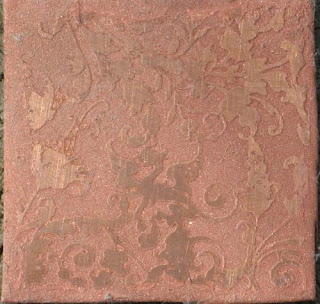Etching is the process of using strong acid or mordant to cut into the unprotected parts of a metal surface to create a design in intaglio in the metal (the original process—in modern manufacturing other chemicals may be used on other types of material). As an intaglio method of printmaking it is, along with engraving, the most important technique for old master prints, and remains widely used today.
Nik Semenoff and L.W. Bader’s article, Intaglio Etching on Aluminum and Zinc Using an Improved Mordant, explains different metals and chemical combinations used in the etching process.
“Since the seventeenth century, artists have etched intaglio images on metal, first using mainly copper and later adapting zinc…while other metals and alloys can be used for etching plates, they are not often used by the average printmaker.”
“The handling and disposal of spent etching solutions, or mordant, has become a problem in the environmentally concerned society of today. Because of these reasons, we began a search for a simple, environmentally safe, inexpensive and readily available mordant that would be useful for today’s etchers…the cost…has created a financial burden for most students...therefore, we decided also to search for less expensive materials that would react much like traditional metals for short printing durations.”
Semenoff, Nik, and L W Bader. "Intaglio Etching on Aluminum and Zinc Using an
Improved Mordant." Leonardo 31.2 (1998): 133-138. JSTOR. Web. 27 Jan. 2011.
<http://www.jstor.org/stable/1576516>.
Gabor Peterdi’s article, Experiments in Contemporary Intaglio Printing, deals with the more creative and innovative aspects of the process.
“Experimentation then was not a premeditated program, but the spontaneous expression of an inner necessity to create broader and more flexible means to accommodate our changing visual concepts.”
““As long as creative people handle tools and materials, unexpected things will happen. Artists invent, not by intent, but by necessity.” Art is a means of communication to me – my concern is the image, the technical means are only related to it.”
Perterdi, Gabor. "Experiments in Contemporary Intaglio Printing." Art Education
17.4 (1964): 9-12. JSTOR. Web. 27 Jan. 2011. <http://www.jstor.org/
stable/3190456>.
As I stated in my last entry, I have been experimenting with the chemical process of photo etching. This process has been around for many years, and began as a technical process which transformed into a more artistic, creative movement. I'd like to experiment with different types of metals, such as zinc and aluminum, to discover the possibilities and limitations of the materials. Etching creates a concave image, which in the process that I have worked in, can relate to a positive or negative image, depending on which portion of the image is eaten away by the chemicals.
photograph of an etched image on copper from:
http://www.evilgenius.net.nz/gallery/album/Copper-Etching

No comments:
Post a Comment